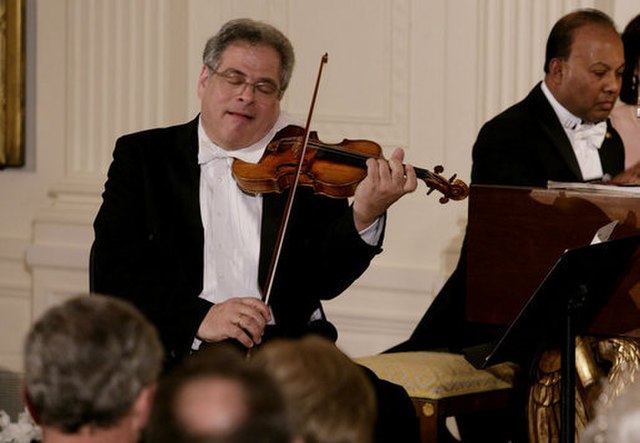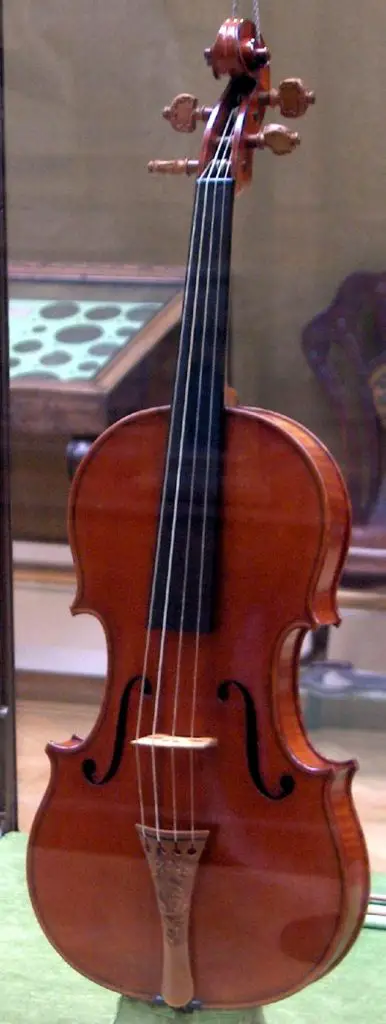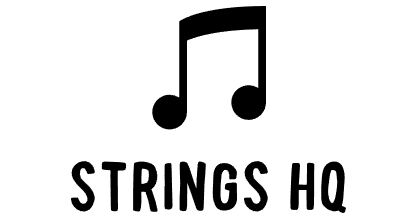Violins have a reputation for being expensive which creates a high barrier to entry for beginners.
Whilst many violins are expensive, it’s certainly possible to purchase a top quality beginner violin for around $900. It’s important to purchase from a well known source and to try out the instrument. A well known source will be trustworthy in production quality and reputation.
Within this article, we’ll detail exactly why violins cost so much, how much you should be spending, and what to look out for.
Summary
The cost of violins varies from around $100 to millions of dollars. Maker reputation, production quality, and age are the main factors in determining the price of a violin. The good news is that the cost of well-made violins is gradually decreasing.
Table of Contents
How Much Do Violins Cost?
The cost of Violins varies greatly. There’s also much debate around how much one should spend on a good violin. Here’s a poll violinist.com did on the cost of their user’s Violins:
As you can see, most people spend a few thousand dollars to tens of thousands of dollars on their violin.
The cost of Violins ranges from $100 for a cheap and cheerful Chinese model, to in the millions for a state-of-the-art Stradivarius. The price depends on many factors ranging from the quality of craftsmanship to the reputation of the Luthier.
Price is not an absolute indicator of sound quality. Good violins can be found in the lower range. We’d recommend staying well clear of the extremely cheap violins as they are very poorly made. Equally, do your research before spending thousands of dollars on a lemon!
The good news is that the cost of good violins seems to be decreasing. During the 1700s (often claimed to be the pinnacle of instrument making) fantastic violins were produced. However, those violins are few and far between. There are now more talented violin makers working in the USA today than there ever have been. There are also high-end workshop violins from China and Eastern Europe producing very good instruments for between $1500 – $2500.
It’s also worth noting that bows can be a significant factor in the cost of owning a violin. Bows can often cost up to one-third of the instrument’s value.
We’ve divided the cost of violins into three main categories:
Cheap, mass-produced factory violins.
It’s possible to pick up a violin for well under $100. These violins are typically produced in large quantities out of Chinese factories.
If you can afford something slightly better, we’d recommend staying well away from this type of instrument. Often the body of the instrument is made from part-plastic rather than a resonant wood. This severely impacts the sound quality.
Quality control is also poor. Dimensions and production will be sub-optimal leading to poor quality sound production as well as a poor user experience.
If you do have to purchase a much cheaper violin like this, take the violin to a string shop to have the violin properly set up. This could make a big difference.
Beginner Violins
You should be able to pick up a good beginner violin for between $300 and $1000. In general, we’d avoid purchasing violins online unless you have tried the specific model first.
The online violin market can create a false economy of poorly-sounding instruments. In addition, most reputable shops will professionally set up the violin.
Many of these violins would be produced by factories out of China. This is why it’s so important to purchase from a professional shop and try out the violin first.
Intermediate Violins
Once a player gets deeper into the art, their ears become more trained and they would start noticing the flaws of their cheaper violins. The sound probably won’t project as far as you’d like, and perhaps the instrument sounds harsh when playing technically challenging pieces.
An intermediate violin could cost anywhere between $1,000 to $5,000. Players would notice a noticeable level of difference in sound, ranges, and complexity.
At this level, violins are likely to be produced by violin makers out of workshops rather than mass-produced in factories. Eastern Europe and China offer excellent value for money at this level. It would take a very well-tuned ear to tell the difference between an excellent intermediate violin and a professional violin.
Professional and Antique Violins
Many professional violinists rent violins rather than purchasing them. This is because professional violins can easily reach the hundreds of thousands and sometimes into the millions. Considering the average salary of a violinist in the US is around $65k, it’s no wonder professional violinists are renting.
A professional violin will almost always be handmade by a well-known maker. Often professional violins would be passed from professional to professional after retirement.
At a bare minimum, you’d expect a professional violin to be at least $10k.

Why are Violins so Expensive?
There are many reasons why violins can be so expensive:
- Craftsmanship
Crafting the violin is probably the biggest factor in influencing its price. The average salaries of good violin makers are high, especially in the US. This is why many violinists are now turning to Eastern European or Chinese violins.
The quality of wood, the skill of the craftsman, and even the age of the used wood are all reasons for the craftsman to charge you more.
- Brand/maker
Violins are produced by many brands just like most products. Good violin makers develop a reputation by producing well-crafted violins and winning awards such as the SVA makers competition.
A good brand will have a solid track record of producing top-quality instruments.
There are many well-known older violin brands that arguably charge a premium based on the brand name alone. Stradivarius is a good example of an extremely well-known family of violin makers. Their violins can fetch as much as $18m.
- Time
The longer it takes to craft a violin, the more it costs. We’ll refer to Stradivarius again, where it took around 150 hours to make a single violin!
That’s over six days of non-stop work.
This is also one of the driving factors behind mass-produced Chinese violins being so cheap. It takes hardly any time within a production line for the instrument to be made.
- Age
Age is becoming less of a factor in determining the cost of violins, with so many high-quality workshops appearing. However, many people still think that older violins sound better.
Violins that are hundreds of years old build up a lot of value, especially if they’re in good condition. On average a good quality violin will increase by around 6% in value per year.
These are antique violins made by famous craftsmen, like Guarneri del Gesu’s Carrodus Guarneri. This violin is around 280 years old and it costs a whopping $10,000,000!
- Size
Violins come in various sizes with the full-sized 4/4 violins being the most expensive. In general, the smaller violins cost less but very small (and hard to find) sizes may be expensive.
Violins can go as small as 1/32 which is considered a baby model. Beginners often start at 1/4 or 1/8 and make their way up to full-sized 4/4 violins.
- Accessories
Violins come with multiple accessories that increase the cost. Extra strings, shoulder rests, music stands, and rosins are all examples of accessories that make a violin more expensive.
Are All Violins Expensive?
Many violins aren’t expensive. You could purchase a cheap violin for $100, but it would be a poor-quality instrument.
All “good” violins are on the expensive side. You could probably perform in a show with a $2,000 violin.
However, once you pass the $10,000 mark, you’re mostly talking about professional instruments and the value leans more towards showmanship than practicality.
How Much Should a Good Violin Cost?
It depends on whether you’re learning or playing professionally. Most professional violins cost upwards of $10,000.
A good beginner-to-intermediate violin should cost an average of $900 or so. These prices apply on the 4/4 size violins only, the smaller size, the cheaper it gets.
It’s possible to purchase an excellent quality intermediate-level violin for as little as $1500. If your budget is limited, look into Chinese or Eastern European produced instruments.
What Is the Most Expensive Violin?
Proudly displayed at the Ashmolean Museum in England; the Messiah Stradivarius is the most expensive violin in the world.
Valued at a ridiculous $20,000,000, it exceeds the second most expensive violin in the world, the Vieuxtemps Guarneri, by a big margin of $4,000,000.

It was crafted in 1716 by Antonio Stradivari and it was rarely played. Only a few violinists were fortunate enough to play it. A couple of examples are Joseph Joachim and Nathan Milstein.
Do Expensive Violins Sound Better?
As long as the violin exceeds around $2,000, the difference in sound isn’t that different to the untrained air. To the trained ear, however, slight differences can be perceived.
Also, The response of the violin becomes notably faster the more expensive it is. But the margin for error also becomes narrower because every mistake will be more obvious.
On the other hand, we have professional and older violins that have more historical value than practical value. These expensive violins usually don’t have an edge over today’s professional violins.
What Are the Quality Differences Between Factory-Made and Handmade Violins?
Most handmade products are better than their factory-made counterparts. Factories focus more on quantity, while hand craftsmanship focuses on quality.
The most important aspect of a violin’s quality is the materials used for crafting.
Factories tend to use cheaper materials that cost less on mass production. They also use spray paint to cover the violins.
Handmade violins, on the other hand, use high-quality materials as well as hand varnish, which produces both better sound and appearance.
Additionally, hand-crafted violins gain much of their value and quality from the skilled hands that work on them, while factories use less skilled labor for reduced costs.
Finally, the attention to detail in hand making a violin makes a huge difference in the sound quality produced. Whilst not all factory-made violins are of poor quality, a good handmade violin will often be far superior.
Why Are Violins So Much More Expensive Than Guitars?
There are a few reasons why Violins are so much more expensive than guitars. The reasons alone are not as simple as differences in material and labor costs.
The biggest reason behind the disparity in costs between the violin and the guitar is around rarity and production. There are fewer skilled and knowledgeable violin makers who produce less volume than guitar manufacturers.
The other reasons included rarity, size, and sound quality.
- Rarity and production
The guitar is one of the most popular musical instruments. Because of that, there’s an abundant number of guitars produced in comparison to violins.
There are also many factories producing high-quality guitars, whereas high-quality violins are often handmade. This inherently makes violins more expensive than guitars.
Guitars can be expensive as well, David Gilmour’s Black Strat is the world’s most expensive guitar at $3,900,000, but this is nowhere near close to Messiah Stradivarius’ $20,000,000 violin.
- Materials
The main difference between how guitars and violins are played is in the bowing and plucking technique.
Since Violins are bowed, there are more intricacies around how a violin is manufactured in order to produce a high-quality sound. The wood, for example, tends to be spruce, willow, maple, or ebony – all of which are expensive.
- Sound Quality Loss
Guitars have much larger air boxes in comparison to violins. This works more in favor of masking errors while crafting the instrument.
The smaller your instrument is, the more it would get affected by low-quality materials and less skilled craftsmanship. Therefore many high-quality guitars can be mass-produced by factories whereas high-quality violins tend to be handmade.
Do Violins Cost More Than Pianos?
Violins don’t necessarily always cost more than pianos.
Good beginner’s violins cost you anywhere between $300 to $900. On the other hand, a beginner’s upright piano could range between $3,000 and $6,000.
The same concept applies to intermediate violins and pianos as well. Entry-level and intermediate pianos cost a lot more than their violin counterparts.
However, if we talk about antiques and historical instruments, the violins dominate. The most expensive piano of all time is the Crystal Piano, Heintzman, which costs a little over $3,200,000.
That’s around $16,800,000 less than the world’s most expensive violin!
Conclusion
Maker reputation, production quality, and age all come into effect when determining the price of a violin. Violins can reach millions of dollars at the top end.
However, it’s very possible to purchase a well-made beginner violin for around $900. Although this is a higher barrier to entry, we’d recommend purchasing a high-quality instrument if possible.
